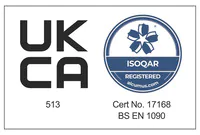
Painting
Contact Us
Metal painting and surface finishing serves a number of purposes, including giving your metal a particular aesthetic appearance, as well as protecting the surface of the metal against corrosion and harsh atmospheres.
James Dunkerley Steels’ metal painting services give you access to high-quality industrial steel painting when you need it, so that you can achieve the aesthetic and protective effects you want, from a trusted supplier.
But what are the available metal painting and surface finishing options?
What is a surface finish?
First of all, what do we mean by a surface finish? In the case of steel, surface finishing takes many different forms, such as galvanising, electroplating and metal painting.
Industrial steel painting doesn’t necessarily use a paintbrush or roller. Our metal painting services use sophisticated techniques to provide a smooth and even finish, ensuring that the full surface of the metal is protected to a good standard.
Types of aesthetic surface finishing
Metal painting is just one form of steel surface finishing, and there are several ways to carry it out. Let’s look at those first.
E-Coating
E-coating is an industrial steel painting process also known as electrophoretic deposition. This uses liquid paint, and the metal part is fully submerged in the paint.
An electric current then adheres the paint to the steel – and by adjusting the current, a thicker or thinner layer of paint can be achieved.
Liquid Coating
Liquid coating is the traditional ‘painting’ technique of applying liquid paint to a surface and leaving it to dry.
This is one of the easiest and most popular methods of metal painting. The paint can be applied with a brush, roller, sponge or sprayed onto the metal surface for an even finish.
Powder Coating
Powder coating uses a dry paint powder which is adhered into place using electrostatic charge, giving a smooth, durable and extremely efficient result.
The high scratch resistance of powder coated surface finishing makes it a popular choice for areas at risk of direct contact, such as exterior automobile parts.
Other types of surface finishing
Apart from painting, there are many more types of surface finishing to choose from:
- Cladding sandwiches one metal between two or more sections of another
- Electroplating to coat one metal with another using electric current
- Electroless plating, which uses chemicals rather than electricity
- Electropolishing uses acid or alkali to smooth metal along its contours
- Galvanising dips the metal in a bath of another molten metal e.g. zinc
This is just a snapshot of steel surface finishing methods – there are too many options to list here, so if you would like some help choosing which method to use, please get in touch.
Benefits of painting and surface finishing
Metal painting and surface finishing is a ‘two birds, one stone’ solution. It not only provides a pleasing aesthetic finish to steel parts, it also protects them against corrosion, scratching and other surface damage.
The exact mechanism of protection depends on the surface finishing technique used. For example:
- Cladding provides a physical outer barrier against damage
- Electropolishing smooths the metal to prevent corrosion in surface imperfections
- Galvanising adds a sacrificial layer (often of zinc) which will oxidise if scratched
Different techniques have different aesthetic effects – and you can combine surface finishing with decorative metal painting if you want to achieve a specific colour.
Contact James Dunkerley Steels today
If you want to know more about any of our industrial steel painting services and/or our surface finishing processes, please get in touch today.
You’ll find all our details, along with our quick and easy message form, on our Contact Us page.

